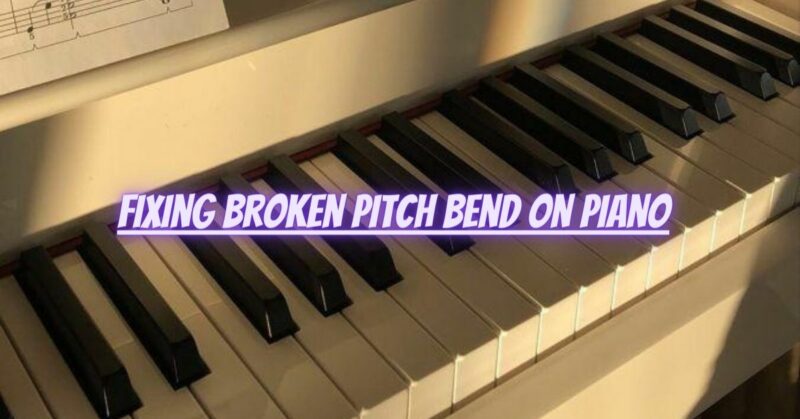The pitch bend wheel or lever on a piano keyboard is a valuable tool that allows musicians to add expressive and dynamic elements to their playing. However, like any mechanical component, the pitch bend can experience issues over time. A broken pitch bend can be frustrating, as it affects your ability to manipulate pitch smoothly. In this article, we’ll explore common causes of a broken pitch bend on a piano keyboard and provide step-by-step solutions to troubleshoot and repair the problem.
1. Check for Obvious Damage:
Inspect the pitch bend wheel or lever for any visible signs of damage, such as cracks, bends, or missing parts. Additionally, examine the surrounding area to ensure that nothing is obstructing the pitch bend’s movement.
Solution:
- If you identify any visible damage, refrain from attempting repairs yourself, as complex internal components may be involved. Instead, contact a qualified piano technician for professional inspection and repair.
2. Clean the Pitch Bend Mechanism:
Dust, dirt, or debris buildup inside the pitch bend mechanism can impede its movement and cause malfunction.
Solution:
- Carefully clean the pitch bend area using a soft, lint-free cloth or compressed air. Be gentle to avoid further damage.
- If the pitch bend is accessible, you can try using a small amount of electronic contact cleaner to remove any stubborn dirt or debris.
3. Calibrate the Pitch Bend (Digital Pianos):
On digital pianos, the pitch bend may require calibration to ensure accurate performance.
Solution:
- Refer to the user manual for your digital piano to find instructions on how to calibrate the pitch bend. Follow the provided steps to calibrate the wheel or lever properly.
4. Check Pitch Bend Settings (Digital Pianos):
Ensure that the pitch bend is activated and that the range is set correctly in the keyboard’s settings.
Solution:
- Access the pitch bend settings in your digital piano and verify that it is enabled and functioning as expected.
- Adjust the pitch bend range if necessary, so it matches your preferred playing style.
5. Test with MIDI or External Devices:
Connect your piano keyboard to a computer or other MIDI-capable device to verify if the pitch bend works when triggered externally.
Solution:
- If the pitch bend responds correctly when connected to an external device, the issue may be related to internal electronics or settings. In this case, a professional technician may be needed to diagnose and repair the problem.
6. Seek Professional Repair:
If none of the above solutions resolve the broken pitch bend, it’s essential to seek the assistance of a qualified piano technician.
Solution:
- Contact the manufacturer’s support or a reputable piano technician to diagnose and repair the broken pitch bend.
- Attempting complex repairs yourself may cause further damage or void any existing warranty.
Conclusion:
A broken pitch bend on a piano keyboard can be a challenging issue to address, depending on the cause of the problem. In some cases, basic cleaning and calibration may restore its functionality. However, if the issue persists or involves internal components, seeking professional assistance from a qualified piano technician is the best course of action. By following the steps outlined above, you can troubleshoot and potentially repair the broken pitch bend, allowing you to continue adding expressive nuances to your piano playing. Remember always to handle delicate parts with care and consult the user manual or professional assistance when needed.


